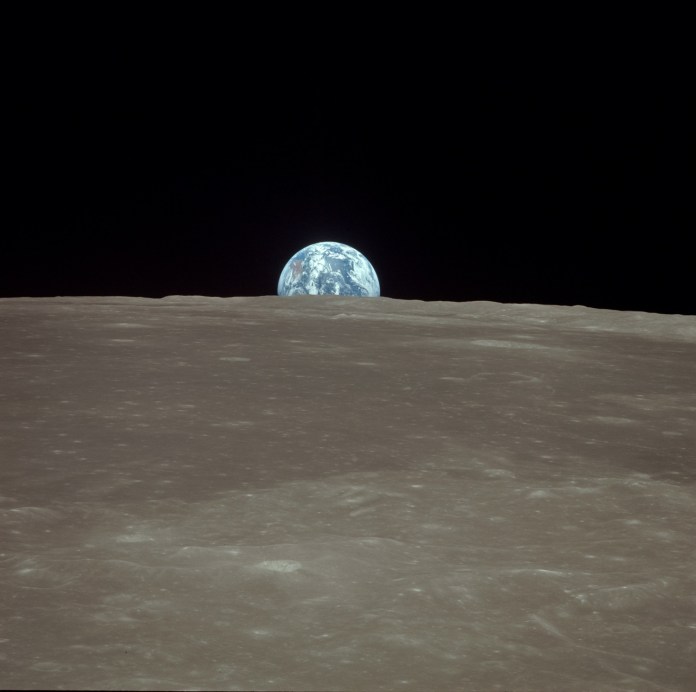The following article by Charys Schuler is an exclusive excerpt from Issue II.2019 and was added to the NASA Historical Archives. You can find a print copy of it here
The pictures taken by the crew of NASA’s Apollo 11 mission are some of the most widely-circulated and immediately recognizable ever made. In 2019, we celebrate the 50th anniversary of mankind’s first steps on the moon. The event continues to affect our collective perception of ourselves and our place in relation to other humans, to our planet, and to the universe. (Unless, of course, you are a conspiracy theorist or a flat-Earther.)
Many books have been written about the context of the mission: the Cold War, the Space Race, and the national pride of two Superpowers. There are also books and internet sites devoted specifically to the camera equipment that was used by the Apollo 11 astronauts. There are even a few people who make their living by painstakingly recreating the cameras that were used on the mission. With the overabundance of available material, it is easy to get lost in the technical developments that were necessary to make photography in space possible and spend hours poring over the gorgeous high-resolution scans of the images made by the crew of Apollo 11, but lose track of the human story.
How must it have felt, being on arguably the most exciting scientific expedition ever attempted, knowing that the entire world would be looking over your shoulder as you performed complex tasks in a life-threatening environment? Did Armstrong, Aldrin, and Collins realize at the time that what most people would remember of their mission would not be scientific results, but photographic images?
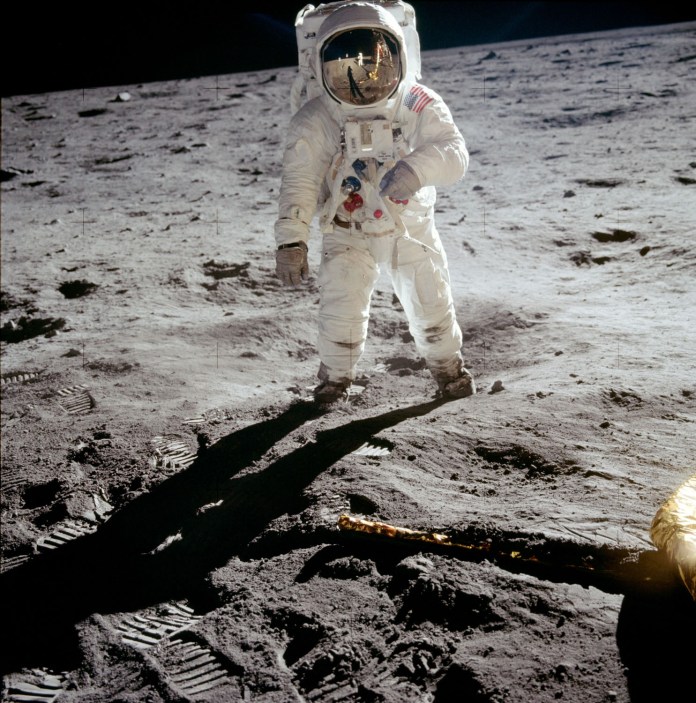
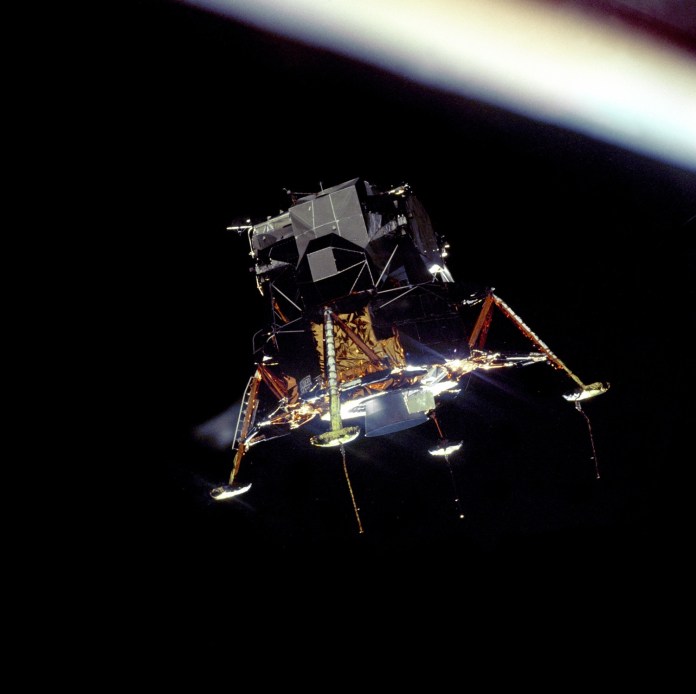

The pictures taken by the crew of NASA’s Apollo 11 mission are some of the most widely-circulated and immediately recognizable ever made. In 2019, we celebrate the 50th anniversary of mankind’s first steps on the moon. The event continues to affect our collective perception of ourselves and our place in relation to other humans, to our planet, and to the universe. (Unless, of course, you are a conspiracy theorist or a flat-Earther.)
These photos can easily be seen as the most globally unifying images ever made. Although the Space Race pitted East against West in many senses, when a man stepped onto the moon it was an achievement for all humans. The photos showed clearly for the first time how small and fragile our home is, and how insignificant our artificially drawn borders really are.
Preparing for Photography in Space
The Equipment: Hasselblad, ZEISS, and Kodak
It’s impossible to estimate how many people all over the world were involved in the process of making photography in space possible. In addition to the astronauts themselves and the entire staff of NASA, there were the people who trained them to make the photos, and the companies that redesigned their equipment so that it would work in a vacuum at extreme temperatures, from over 120°C in the sun to minus 65°C in the shade. Although they were not the only contributors (Westinghouse and Maurer are often overlooked), the most famous companies that worked with NASA were Hasselblad, ZEISS, and Kodak.
The Swedish camera manufacturing company, Hasselblad, started its cooperation with NASA inadvertently when Mercury astronaut Walter Schirra took his personal consumer model Hasselblad 500C with him into orbit. The reliability of the camera and the quality of the photos weren’t lost on NASA’s engineers, and a long-lived partnership was born.
For the Apollo 11 mission, eight cameras were deemed important enough to make the cut for the final set of equipment, including two motion picture cameras, two television cameras, a Kodak stereoscopic camera for closeups, and three Hasselblad 500ELs. Most of the truly iconic images we know today were shot with the Hasselblads. Each camera had been forced by NASA’s insistence on whittling away every superfluous gram to be completely stripped and rethought in terms of weight before any other modifications were made.
Even with extensive preflight training, the astronauts were amateur photographers at best, so the EL model was a natural choice. The electric motor of the 500EL exposed the frame, wound the film to the next frame, and reset the shutter automatically so that the astronauts only had to set distance, aperture, and shutter speed. (It sounds easy until you imagine doing it while looking through a helmet wearing huge gloves.) Modifications included special locks for the film magazines, and the use of a simple sighting ring instead of a reflex mirror viewfinder.
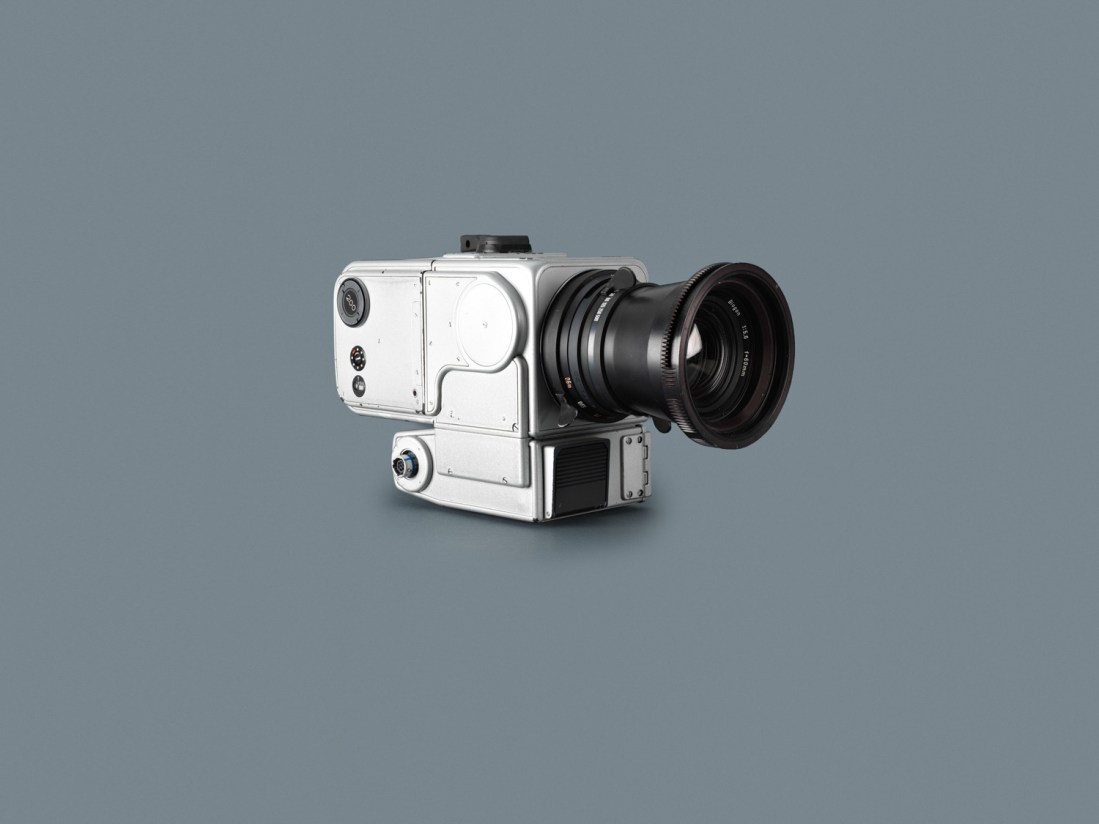
above: Hasselblad HDC (Hasselblad Data Camera) – silver for EV activities, used on Apollo 8, 9, 10, 11 flights. Credit: Hasselblad
to the right: Hasselblad HEC (Hasselblad Electric Camera) – black for photography inside the LM, used on Apollo 8, 9, 10, 11 flights. Credit: Hasselblad
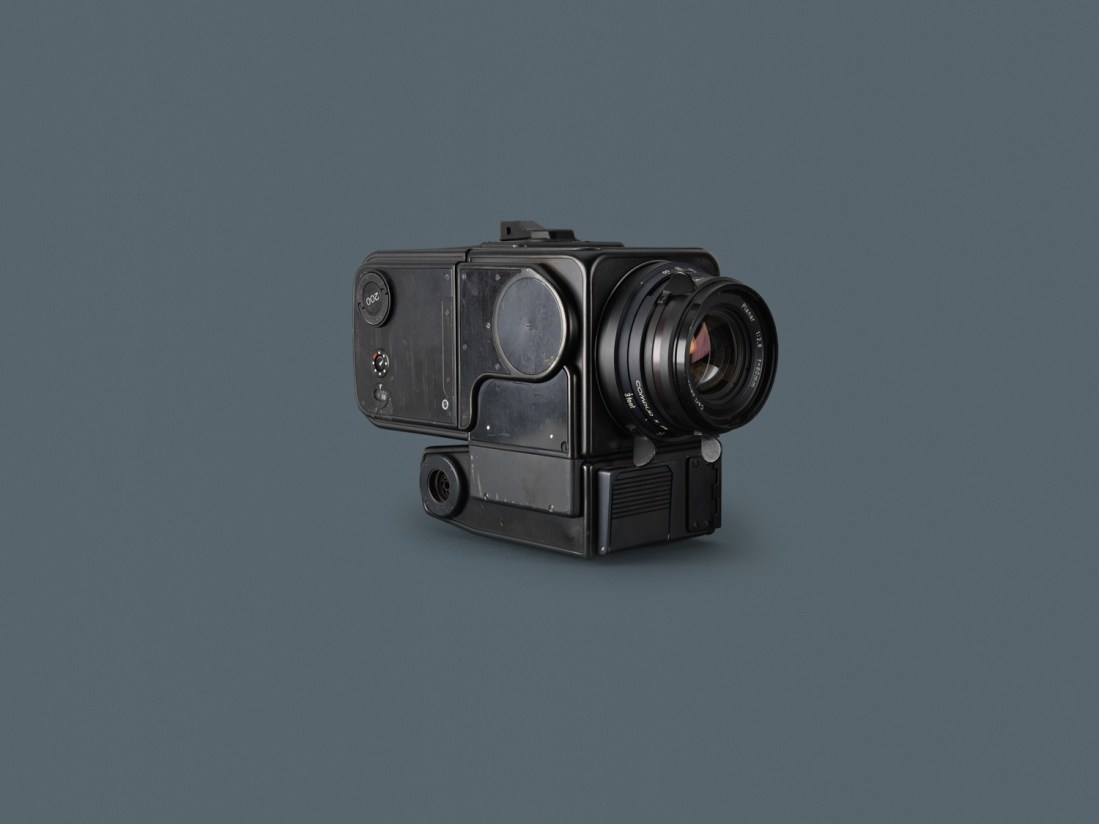
The model used inside the Lunar Module (LM) was painted black to reduce reflections, as were the matching film magazines. The Hasselblad model used for Extra-Vehicular Activity (EVA, shown above) outside the LM was anodized, as were its magazines, to prevent the surfaces from overheating in direct sunlight, and didn’t have any of the conventional liquid lubricants inside, which would have boiled off and possibly condensed onto the optical elements. The camera and film magazines were fitted with tether rings and were lowered to Armstrong on the lunar surface using what a NASA technical document referred to as a “clothesline-like arrangement.”
The other element included on the EVA camera was a Reseau plate. Commonly used for scientific and technical photography of the time, it had an extremely precise grid of crosshatches (accurate to 0.002mm) which made it possible judge very accurately how far away (and thus how large) various objects in the picture were. The modification of the Reseau plate is a good example of the many challenges overcome by engineers while planning for lunar photography.
In our normal Earth-bound cameras, when a film is wound, static electricity is generated on the film’s surface and then dispersed by the metal rims and rollers which guide the film, and by humidity in the air. In the EVA camera, the film was guided by the raised edges of the Reseau plate. Since glass is a poor conductor and there was no surrounding air to provide humidity, the electrical charge could have built up and caused a spark between the plate and the film. To prevent this, the side of the plate facing the film was coated with a thin transparent conductive layer, and a further layer of silver on the edges of the plate conducted the static charge to the metallic parts of the camera body.
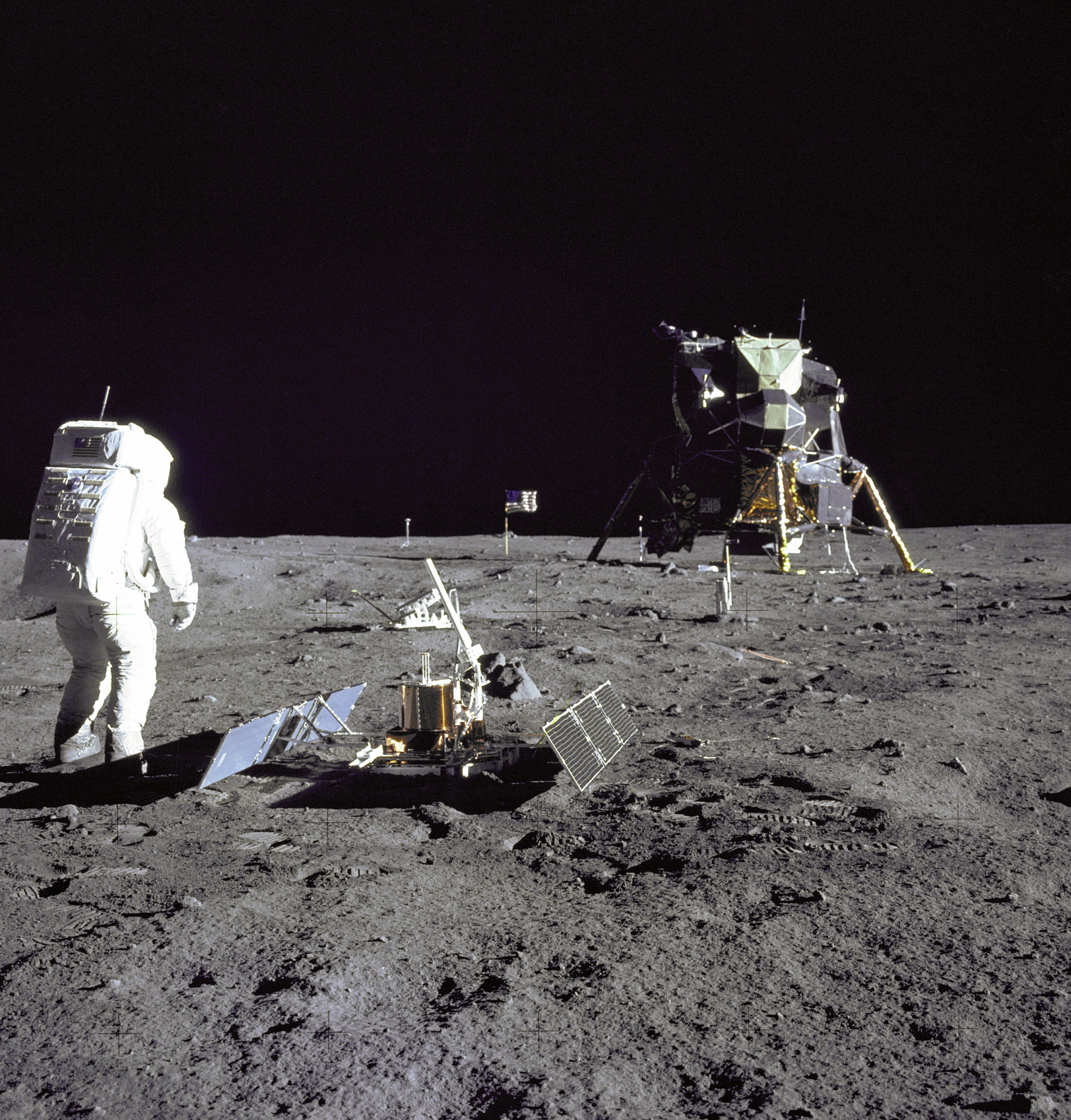
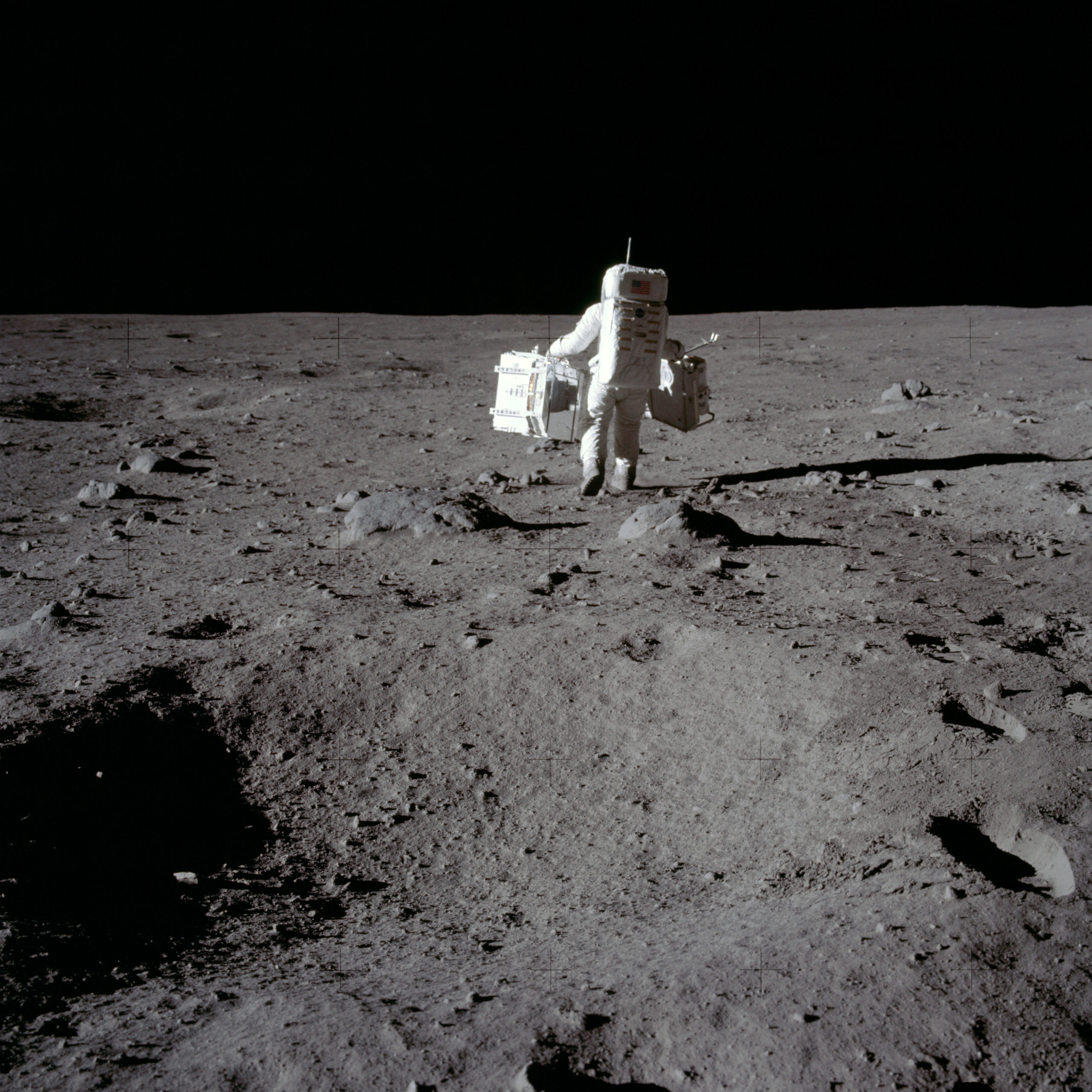
The wide-angle Biogon 5.6/60mm lens was developed especially for the moon landing, and joined the Planar 2.8/80mm and Sonnar 5.6/250mm lenses on the Apollo 11 mission. The lenses were modified in several ways: all hollow spaces were opened (trapped air would have exploded outwards in a vacuum), the lenses were not completely coated (to prevent the release of gases from the mineral coating), the aperture and focus settings were modified for use with thick gloves, and the liquid lubricants were replaced with dry ones or omitted. The third big player in lunar photography on Apollo 11 was Kodak. Not only did Kodak provide one of the cameras used, the stereoscopic camera which enabled extreme
closeups of rocks and dust on the lunar surface, NASA also used thin films for use with emulsions especially developed by Kodak for photography in space.Although the specific films used for Apollo 11 aren’t noted on the official records, it is indicated that the same films were used as on the Apollo 8 mission. These were 70mm Panatomic-X ASA 80 for black and white, and some combination of EKTACHROME films for color photography, probably including the 2485 with its extremely sensitive ASA 1600 rating. Each black and white magazine yielded approximately 200 images, and the color magazines 160.
Training Astronauts to be Photographers
The painstakingly designed and manufactured equipment still needed to be used by people, and those people weren’t professional photographers. All of the astronauts underwent significant photography training over a period of two years in preparation for the mission.
In addition to being encouraged to take Hasselblad EL cameras with them on personal trips to gain a sense of everyday familiarity, they were also taken to geologic sites to practice the kind of scientific and technical photography that would be required on the moon. The skills of focusing and setting exposure properly were crucial and needed to be practiced extensively. One of the most difficult skills to learn was framing shots with a camera attached to the chest environmental controls of a spacesuit; they needed to turn their body to aim the camera. But NASA didn’t underestimate the value of having beautiful images in addition to technical documentation and provided courses on composition and other less technical aspects of photography. Films exposed during training were processed and returned to the astronauts, who studied the results to help refine their technique.
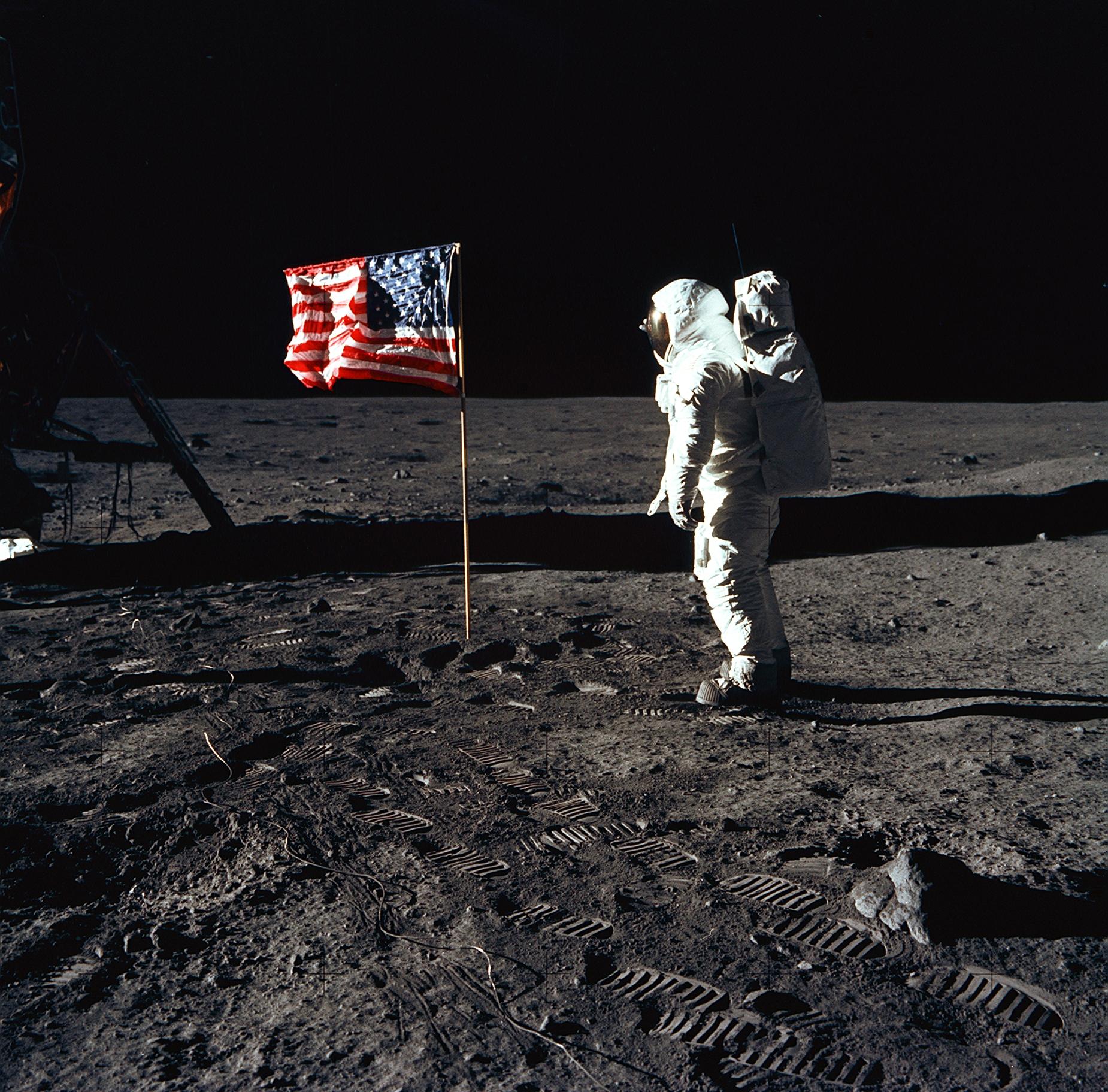
I am very glad that Armstrong and Aldrin made portraits of each other, even though it wasn’t on the list of photographic objectives.
Armstrong managed to shoot quite a good portrait of Aldrin in the confines of the ship prior to their lunar landing, but it is the slightly out-of-focus and poorly lit picture of Armstrong post-EVA, his face glowing with excitement through exhaustion, that gives me the better sense of what they must have been feeling.
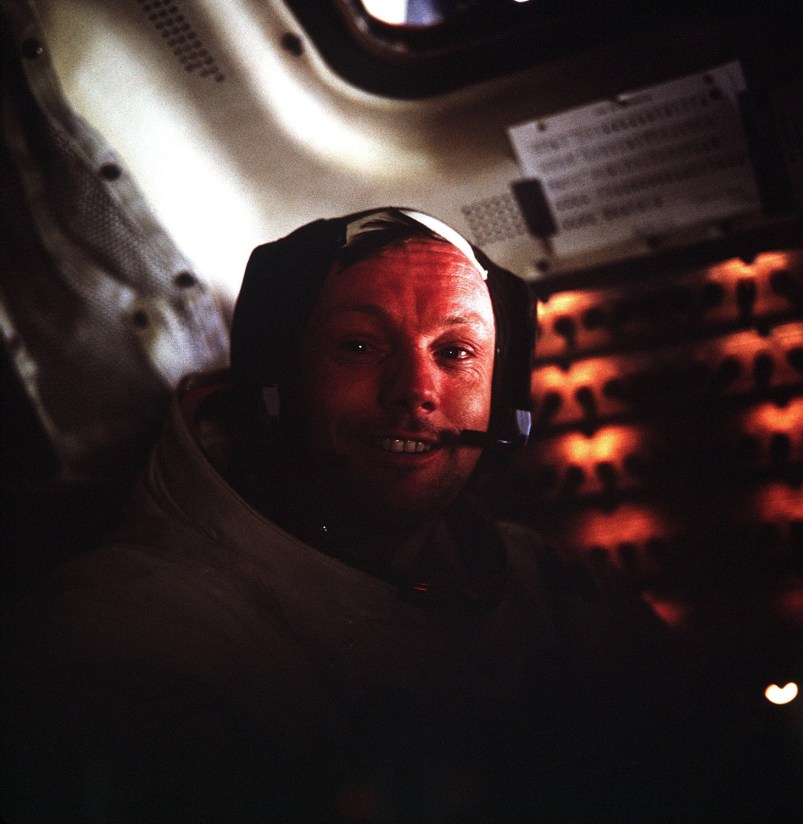
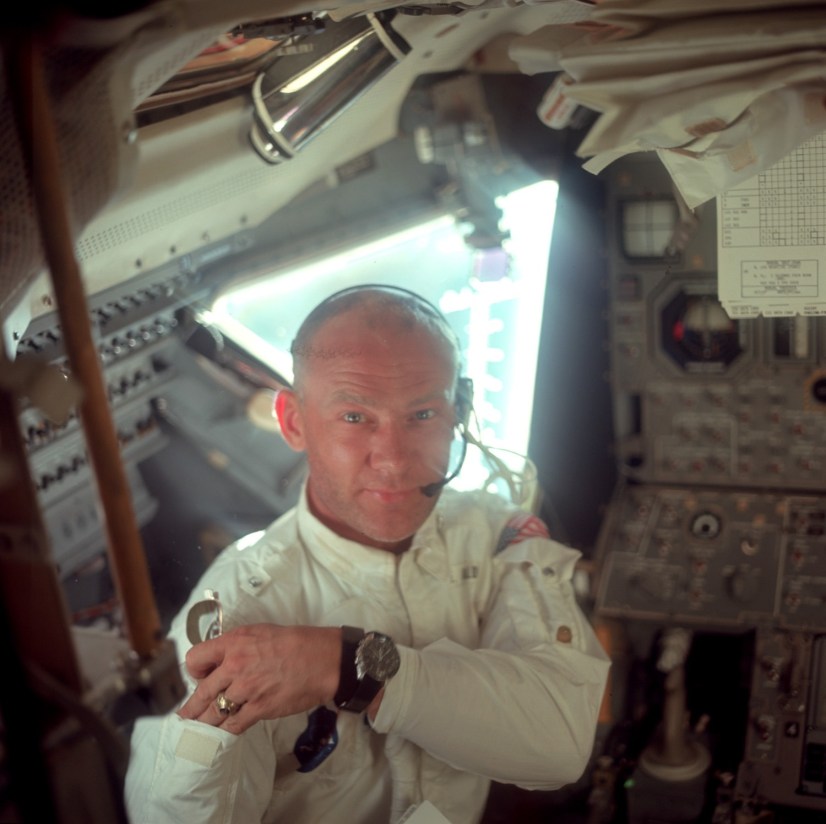
There and Back: The Legacy Continues
The last message Neil Armstrong received from Houston while standing on the surface of the moon before returning to the LM was, “Neil, this is Houston, did you get the Hasselblad magazine up?” To which he replied, “Yes, I did. And we got about, I’d say, 20 pounds of carefully selected, if not documented, samples.”
In 1999, Michael Light published his book, Full Moon, which contained a beautifully curated set of photographs from not only the nine Apollo missions, but also some Earth orbital photos from the Gemini missions. His work restoring and editing the images has become a benchmark for NASA Apollo photographic material, and the prints he made are on permanent display at the American Museum of Natural History in New York. He described the problems he had with color inconsistencies in the magazines and theorized about possible causes.
“Transparency film from AS16 is consistently, relentlessly blue, AS17 transparency film is pretty consistently magenta, and so on through the missions… I worked in my exhibition printing towards a neutral gray.” One possible explanation he theorises for the color discrepancies is that, “…all color film shot on the moon was made for an Earth-based chromatic spectrum of light, not that of a vacuum. The film ‘saw’ color differently in space… than it would on Earth. The colors that it recorded are thus not to be trusted in the same way that we trust color film on Earth.”
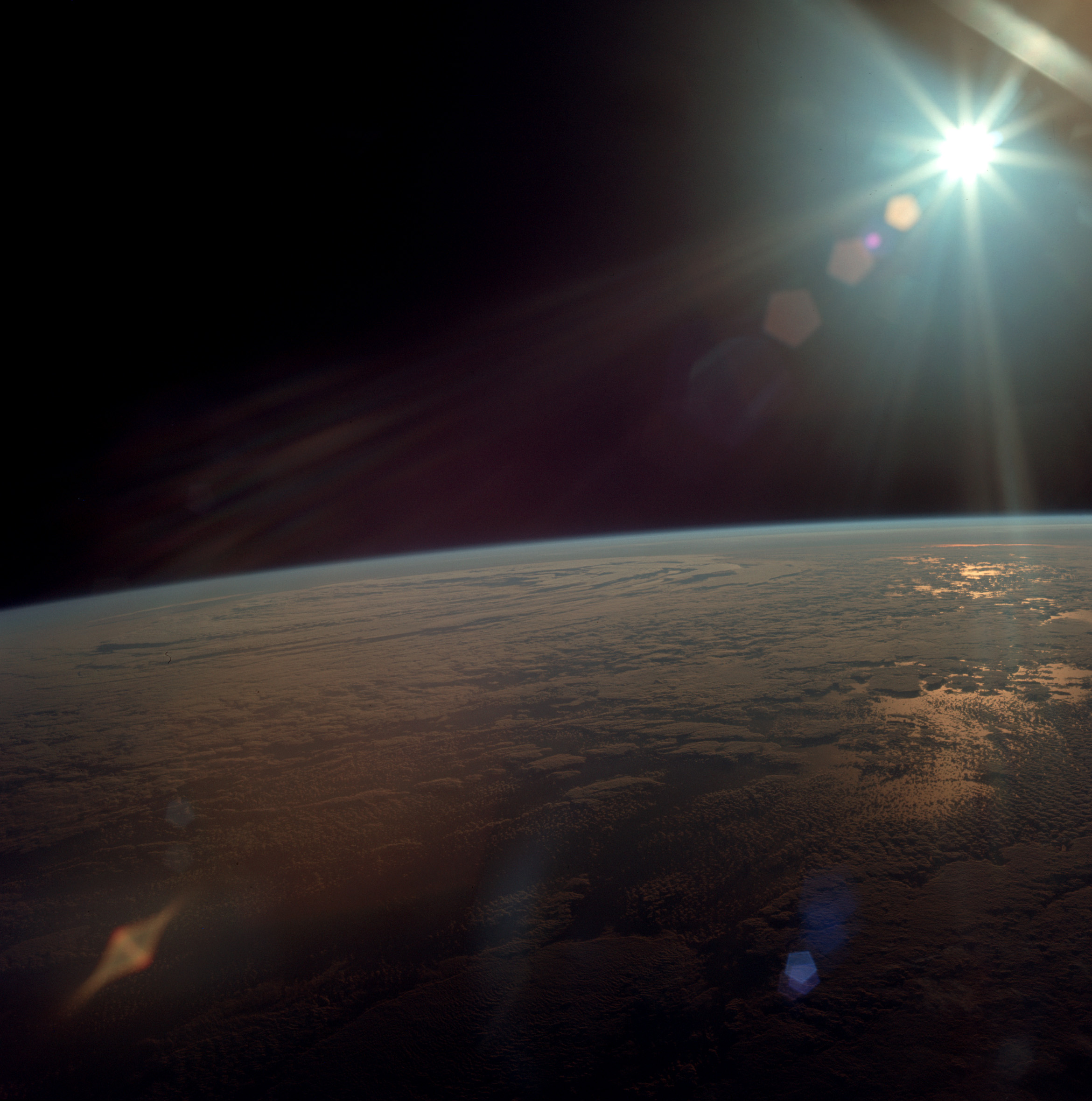
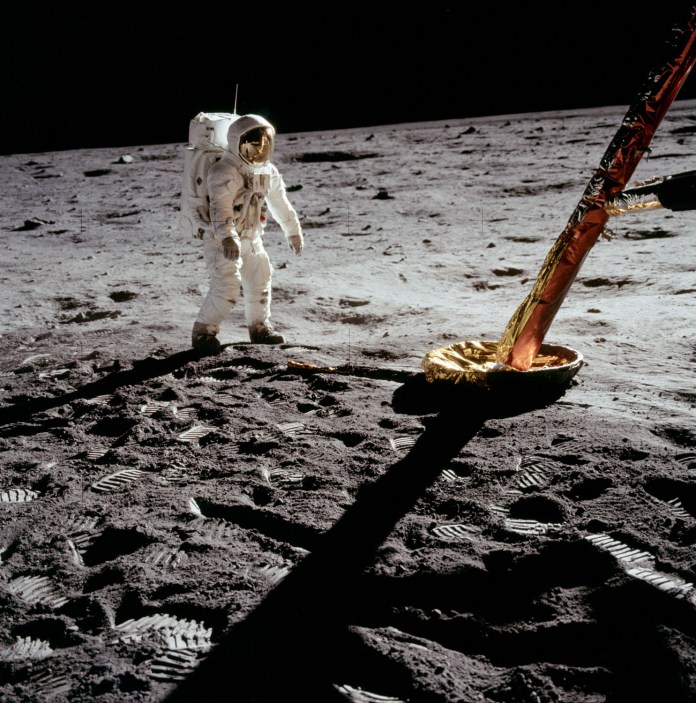
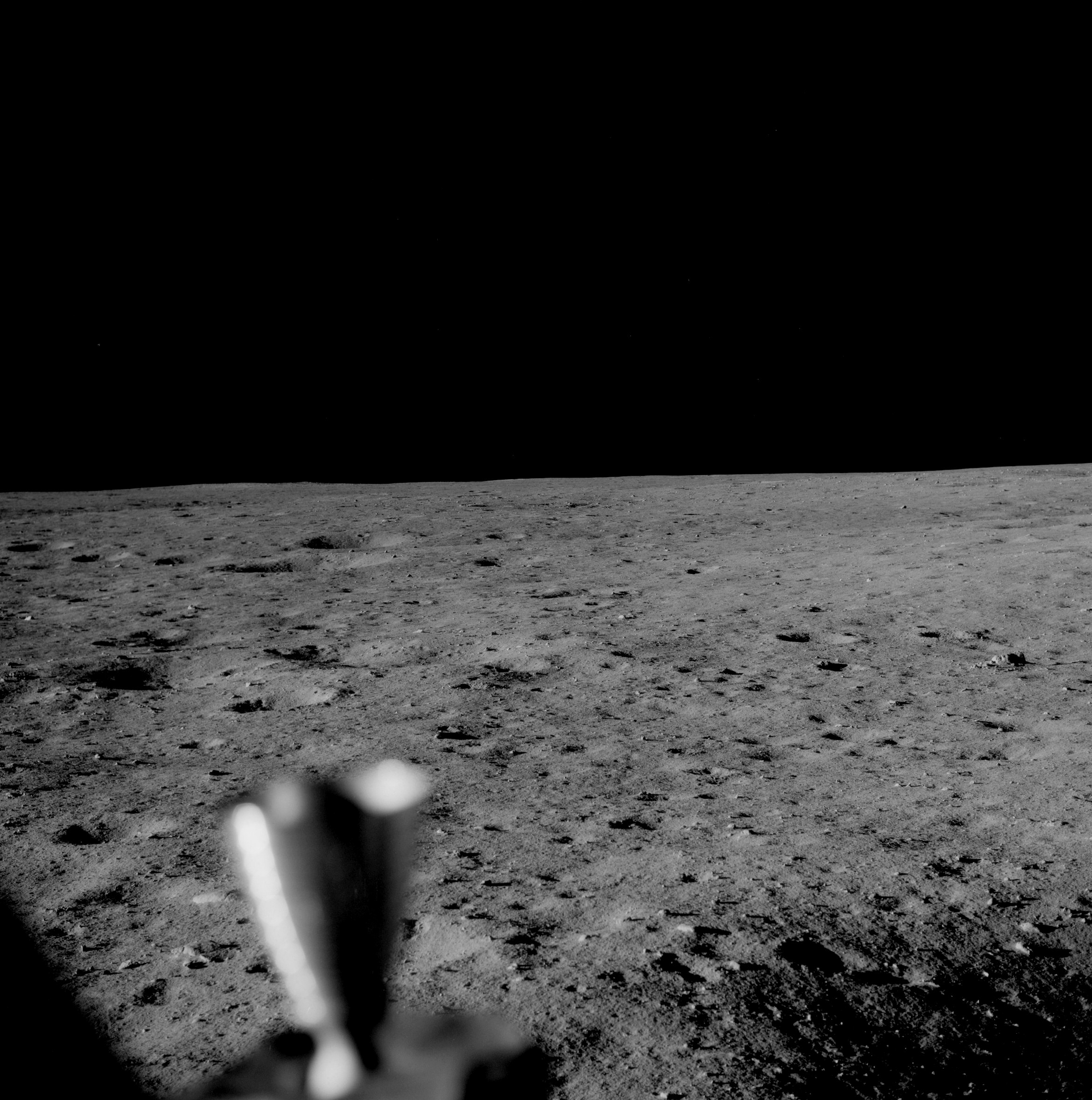
One of the surprises I found while going through the complete Apollo 11 film magazine scans was the number of out-of-focus, accidental shutter release, and strangely framed shots I saw. I was familiar with the handful of images that have been circulating for decades: earthrise over the lunar surface, a footprint in the lunar dust, Buzz Aldrin saluting the American flag, etc. They are simply stunning. I guess I had assumed that the photos that didn’t quite make the cut were similar.
On the one hand, it was a bit tedious and disappointing to see shot after shot of the arm of someone’s spacesuit or an out-of-focus engine of the command module. But in the end, it made me aware of the fallibility of the men who took the photos, which in turn made it easier for me to identify with them, rather than seeing them as cardboard cutout heroes. They must have been waiting very tensely for the results of the film magazines. I’m sure that the technicians who developed all of the equipment used were also sitting on the edge of their seats until the films were processed.
The ZEISS website lists an incident that reportedly took place immediately after the films were returned to Earth. The initial frames (a standard test portion) were cut off to process before developing the entire magazine. During this test, the machine used to process the film sprayed drops of ethylene oxide, destroying the test film. This event is not mentioned anywhere on the NASA site or anywhere else I could find, so we can’t be sure of its accuracy. But it is an amazing thought to consider that, but for an abundance of caution, an entire magazine of 200 images might have been lost!
Dr. Victor Hasselblad was invited to attend the launch of Apollo 11, a rare honor. Dr. Hasselblad was known for being extremely confident about the quality of his product; but perhaps he had some small moment of doubt while watching the launch and the televised coverage from the moon, wondering how all the cheering people might look at him if the films came back unusable due to some unanticipated flaw. A touching press packet from the company, released in September 1969, describes employees gathering to light celebratory cigarettes after receiving a telegram from NASA that the images were not just acceptable, but “absolutely perfect.”
No part of this gigantic undertaking was a guaranteed success. In 2018, Damien Chazelle’s visually stunning film, First Man, (shot on film, incidentally) redefined the way many of us think about the experience of space travel with its gritty, industrial, fly-by-the-seat-of-your-pants realism. The fact that we have for fifty years seen the Apollo 11 mission through the eyes of mythical heroes worthy of a Hollywood happy ending is due to an incredible amount of work done by people from all around the globe. It is also due to the beautiful photos the crew made, which allowed us to share in the wonder of the experience.
